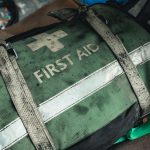Introduction: In any workplace, safety should always be a top priority. Whether you’re working in construction, healthcare, manufacturing, or any other industry, the importance of Personal Protective Equipment (PPE) cannot be overstated. PPE serves as a crucial line of defense against workplace hazards, protecting workers from injuries, illnesses, and even fatalities. In the UK, regulations surrounding PPE are stringent, reflecting the commitment to safeguarding workers’ well-being. Let’s delve into why PPE is essential and how it plays a pivotal role in maintaining health and safety standards across various sectors.
Why is PPE Necessary?
- Protection Against Hazards:
- PPE serves as a barrier between workers and potential workplace hazards such as chemicals, sharp objects, loud noises, and airborne contaminants.
- It minimizes the risk of injuries, illnesses, and long-term health complications, fostering a safer working environment.
- Legal Compliance:
- In the UK, the Health and Safety at Work Act 1974 mandates employers to ensure the health, safety, and welfare of their employees, including providing appropriate PPE.
- Non-compliance with PPE regulations can result in severe penalties, legal repercussions, and reputational damage to businesses.
- Risk Mitigation:
- Conducting thorough risk assessments allows employers to identify potential hazards and determine the necessary PPE for mitigating those risks.
- By implementing suitable PPE measures, employers demonstrate their commitment to safeguarding employees and reducing workplace accidents.
Types of PPE:
- Head Protection:
- Helmets or hard hats are essential for safeguarding workers from head injuries caused by falling objects, collisions, or overhead hazards.
- Eye and Face Protection:
- Safety glasses, goggles, or face shields shield the eyes and face from flying debris, chemicals, and other hazards that may cause eye injuries or facial trauma.
- Respiratory Protection:
- Respirators protect workers from inhaling harmful airborne particles, gases, vapors, and fumes, ensuring respiratory health and preventing occupational illnesses.
- Hand Protection:
- Gloves offer hand and skin protection against cuts, burns, chemicals, and other hazards prevalent in various industries.
- Foot Protection:
- Safety boots or shoes with reinforced toe caps and non-slip soles safeguard feet from crushing injuries, punctures, slips, and falls.
- Body Protection:
- Coveralls, aprons, vests, and other garments shield the body from various workplace hazards, including chemical splashes, abrasions, and electric shocks.
Ensuring Effective Use of PPE:
- Proper Training:
- Employers must provide comprehensive training on the correct usage, maintenance, and storage of PPE to all employees.
- Training should encompass fitting procedures, inspection guidelines, and protocols for reporting damaged or defective equipment.
- Regular Inspections:
- Routine inspections of PPE ensure that equipment remains in good condition and continues to offer adequate protection.
- Any signs of wear, tear, or damage should prompt immediate replacement to prevent compromise in safety.
- Employee Engagement:
- Encourage open communication and feedback from employees regarding the comfort, effectiveness, and suitability of PPE.
- Addressing concerns and soliciting input fosters a culture of safety and empowers workers to actively participate in maintaining workplace well-being.
Conclusion: Personal Protective Equipment (PPE) plays an indispensable role in upholding health and safety standards across workplaces in the UK. By providing employees with the necessary protective gear, employers demonstrate their commitment to prioritizing worker welfare and complying with legal obligations. Effective implementation of PPE measures not only reduces the risk of workplace accidents and injuries but also cultivates a culture of safety where employees feel valued and protected. Remember, when it comes to workplace safety, there’s no room for compromise. Stay safe, stay protected!



